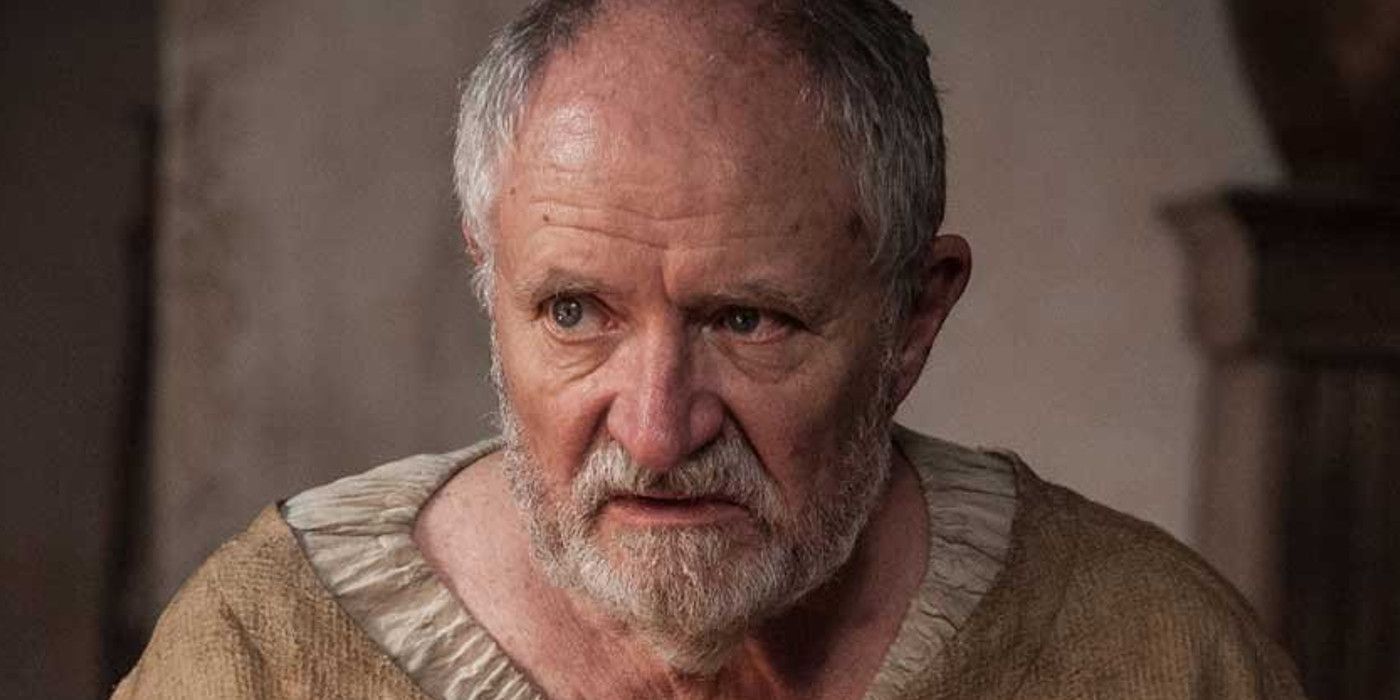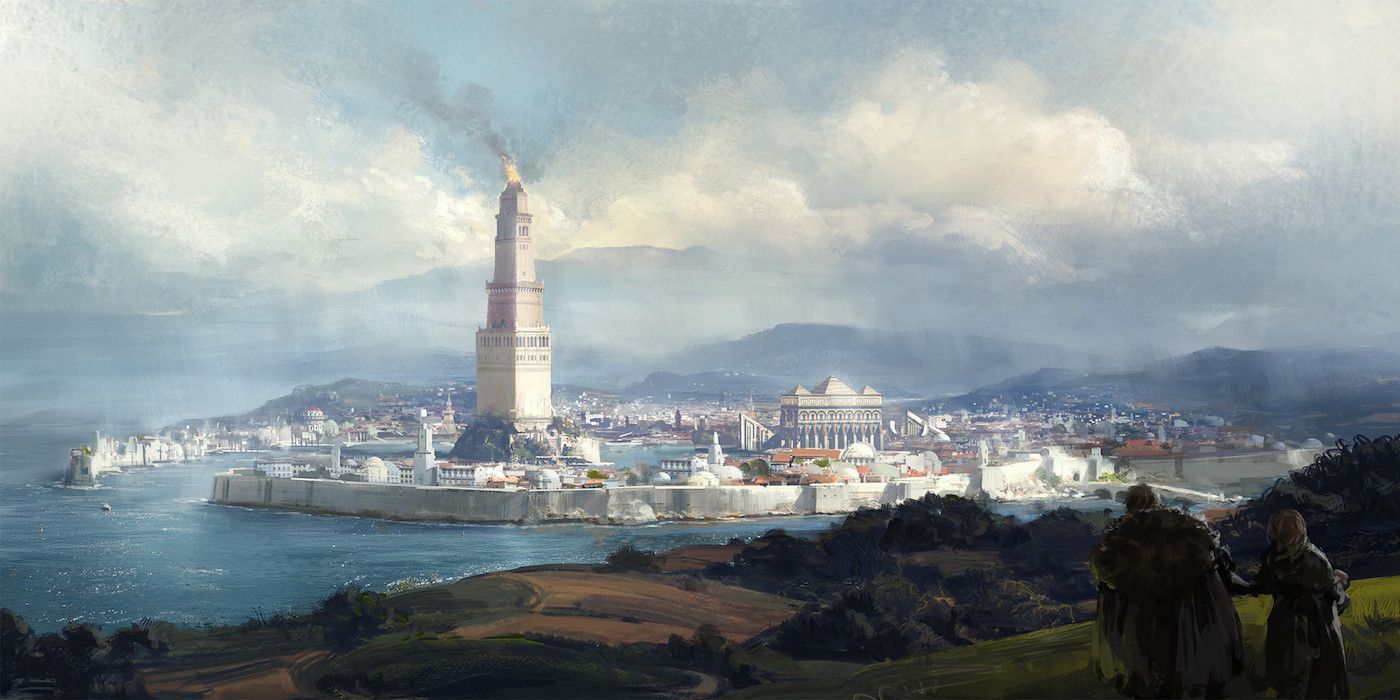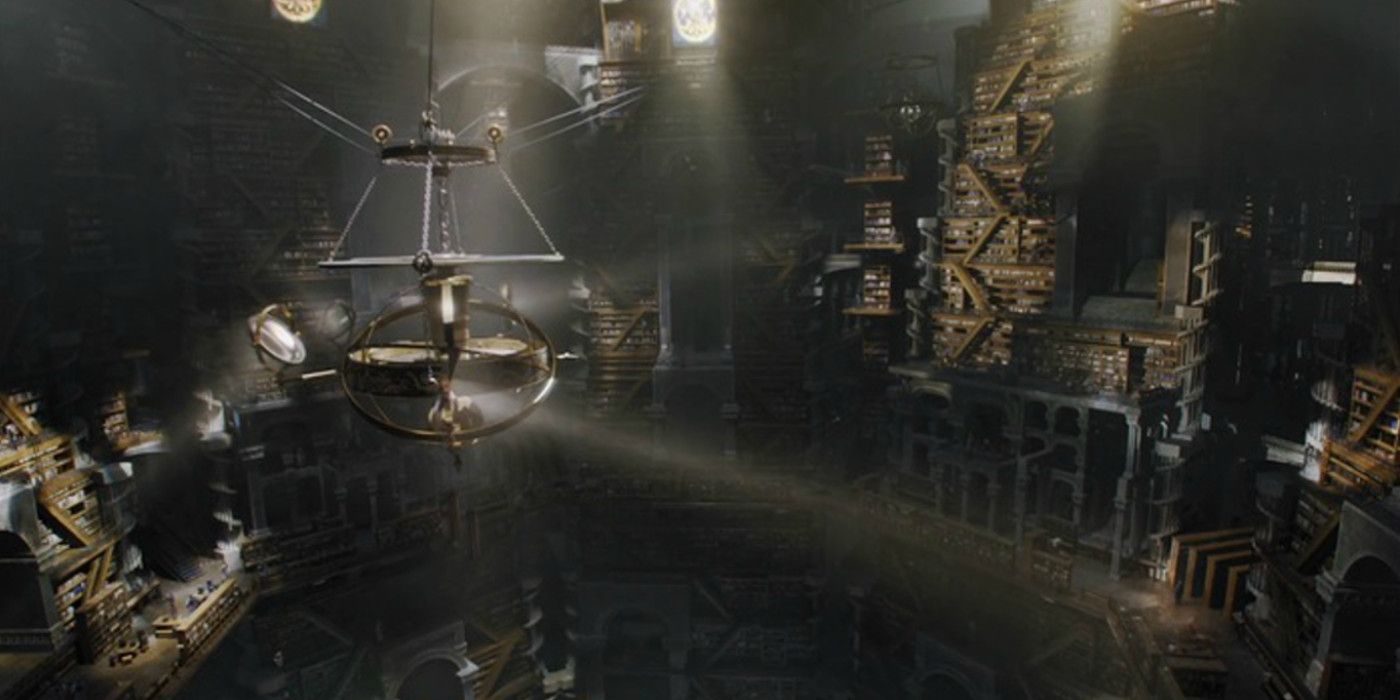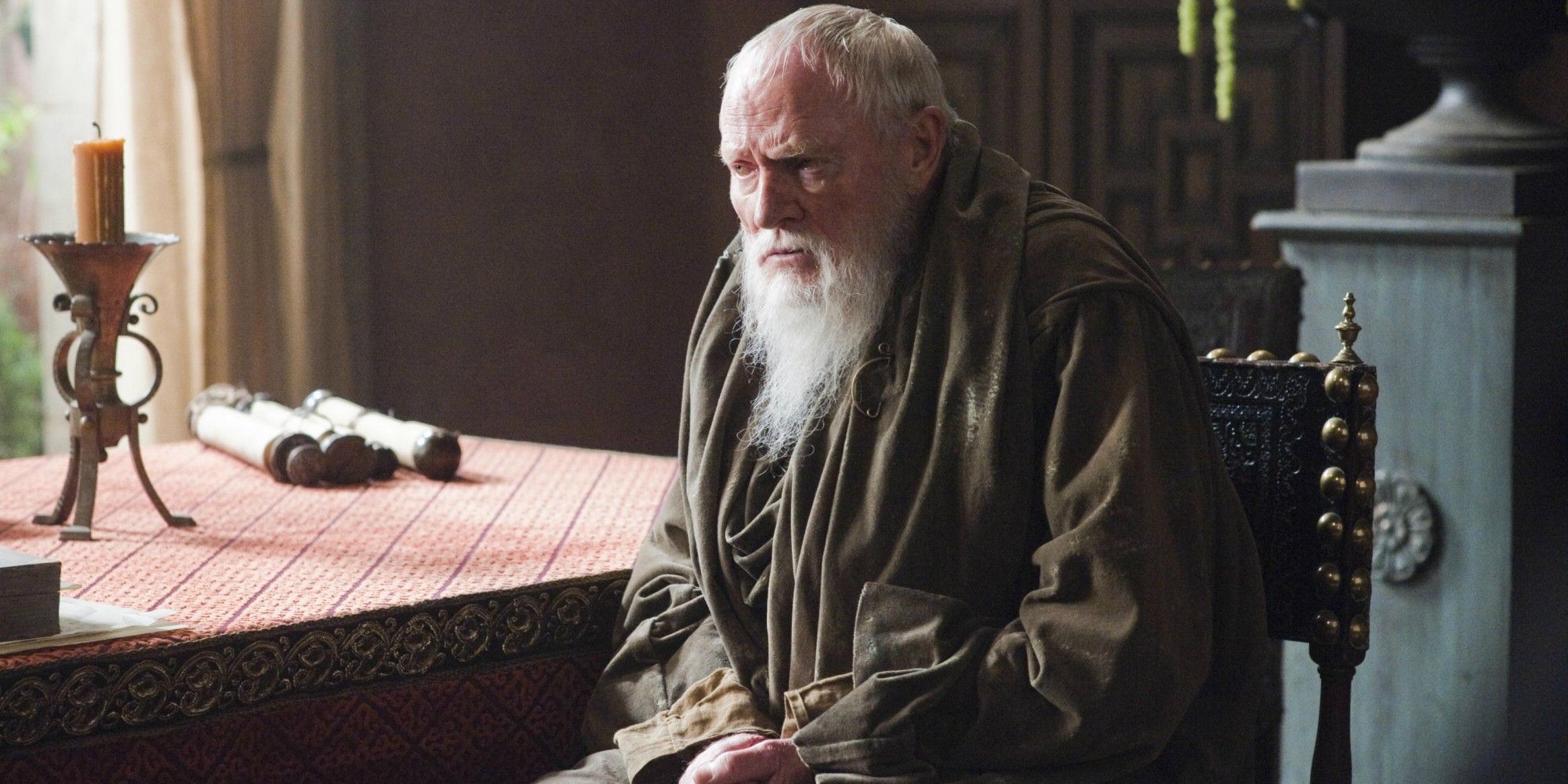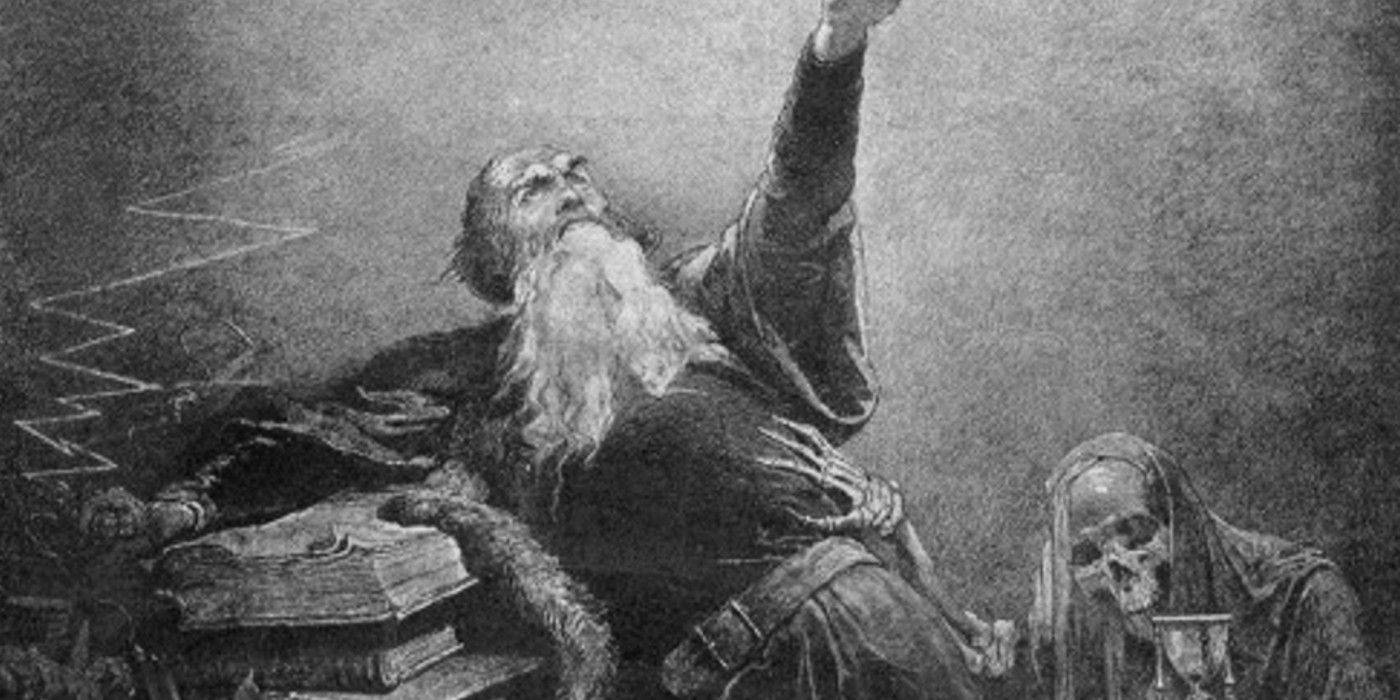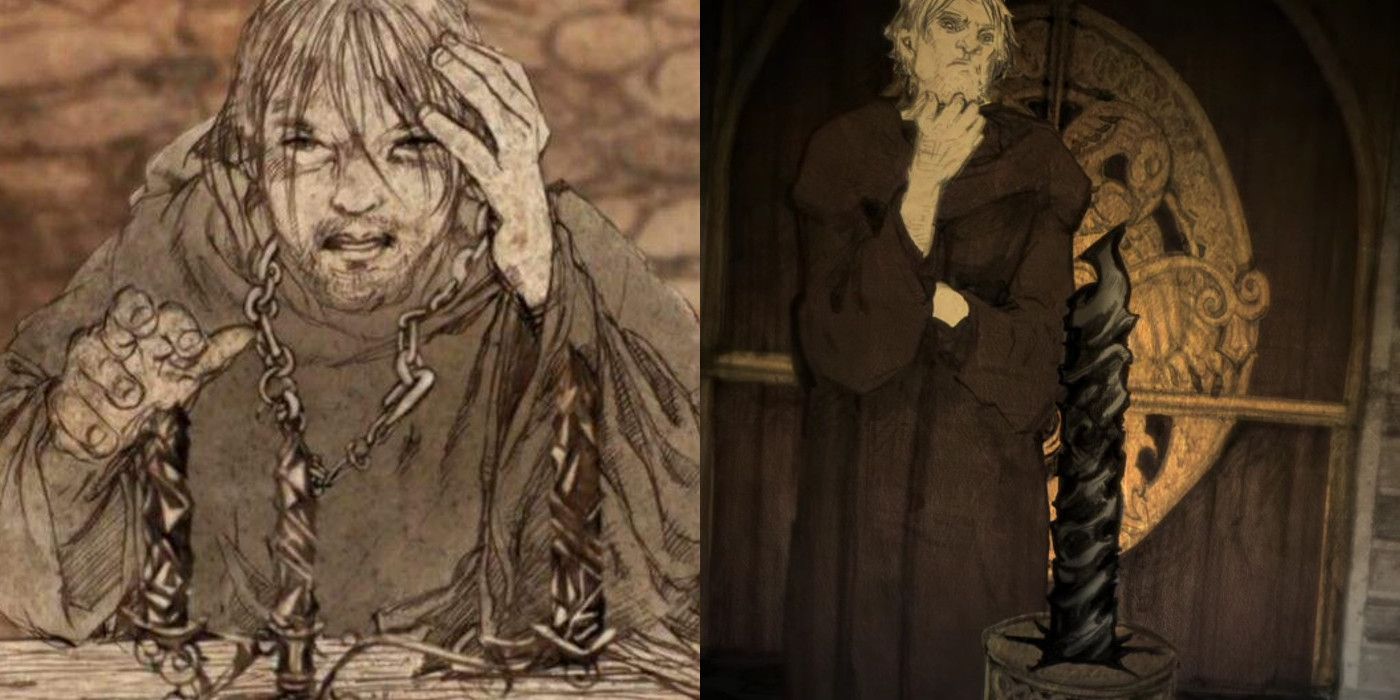With the penultimate season of Game of Thrones underway, the usual suspects are in tow. Cersei, Dany, Jon, and Euron dominate the conversation, but as they duke it out for the Iron Throne, deeper truths are coming to light. The dutiful Samwell Tarly is in the land of secrets itself: Oldtown, home to the maesters and their enigmatic world.
In “Dragonstone,” the opening episode of the seventh season, we find Sam on his journey to become maester of The Wall. Though he’s surrounded by the high-minded men of The Citadel, he’s tasked less with cerebral challenges and more with janitorial duties. Even when he gets to speak of White Walkers and the Long Night with Archmaester Ebrose (a mid-autopsy Jim Broadbent), he still ends up cleaning the remnant blood and guts. It’s a humbling introduction to what may very well be the most significant location (and unsuspecting protagonist) in this season of Game of Thrones.
Here’s everything you need to know about Oldtown, The Citadel, the grand maester conspiracy, and the magical tools a few maesters employ.
Oldtown and The Oily Black Rocks
Oldtown is the oldest city in Westeros and has been home to two foundational movements: the Faith of the Seven and the the Order of Maesters. The city is the fountainhead of influence in Westeros. Where the Faith built their Starry Sept, the Maesters used the Citadel to house their operations.
Though the Citadel may be a famous attraction in Oldtown, the Hightower is the attention-getter. Standing at over 800 feet high, it eclipses The Wall as the tallest structure on the continent. The skyscraper is built on Battle Isle, a land formation whose name has no explanation or confirmed history despite the many theories surrounding its genesis. More importantly, Battle Isle has a foundation made of “oily black stone” that some suspect is a variation of dragonglass, though many are too confounded by its existence to offer a satisfactory explanation. The plinth of Hightower shows no sign of human hand, “no hint of joint or mortar, no chisel marks of any kind.”
Curiously enough, this same black stone is found in ruined civilizations across the planet. The Seastone Chair is made of it, as is the Toad Stone, the chthonic buildings of Asshai, the City of Yeen, the Five Forts south of the Bleeding Sea, and several others. Maester Theron notes that each of these structures is located near large bodies of water. In speaking about the religion of the Drowned God, Theron posited that Hightower was created by the Deep Ones, “a queer, misshapen race of half-men sired by creatures of the salt seas upon human women.” To contrast those watery rumors, there are also the tales that arose out of Yi Ti, where legend has it that the Long Night began when a meteorite of greasy black stone fell from the sky.
Samwell Tarly may be knee deep in Maester excrement at the moment, but he’s just a few yards from the most secret substance in all of Westeros. If anyone knows the truth about those oily black rocks, you can bet the maesters have answers.
An Overview of Maesters and The Citadel
Think of the maesters as the Illuminati of Westeros. The Citadel is their church, and their bibles are the seemingly infinite (and chained) books strewn about the cavernous interior. It’s a fantastical Library of Alexandria. To avoid having an equally fiery fate as the library of yore, the Citadel’s central chandelier reflects light throughout the building, negating the need for candles. Though this was revealed in season six, it’s worth reminding that the rotating chandelier is the same one featured throughout the show’s opening credits. If nothing else, this connection hints at the maester’s indelible influence throughout Westeros.
As the guardians and purveyors of knowledge, maesters look to the Citadel to expand their horizons. It’s the place “where maesters earn their chains,” the outward signs of their expertise. These chains are color-coded to signify their knowledge: silver for medicinal knowledge and healing, black for ravenry, gold for economics, and so on.
There are four tiers within the Order: Maesters, Archmaesters, the Grand Maester, and the Seneschal. Though each rank has different responsibilities, they all work in tandem to protect their secrets and silently shape the course of history. While the majority of maesters and archmaesters stay at the Citadel, a select few are assigned to individual houses across the Seven Kingdoms. There, they are relied upon to deliver sound military, political, and economic advice, manage the messaging ravens of the house, and provide medicinal and healing techniques when needed. If your name is Qyburn, you take this responsibility a bit too far and turn Gregor Clegane into Zombie Mountain.
The point is, while the network of maesters and archmaesters protects the headquarters, they remain closely connected to every local house through their designated representatives. That’s like having a member of the Supreme Court in every major politician’s home.
Next Page: [valnet-url-page page=2 paginated=0 text='The%20Grand%20Maester%20Conspiracy']
The Grand Maester Conspiracy
On the surface, the Order of the Maesters is a group of chaste scholars dedicated to the intellectual growth of Westeros. As Grand Master Pycelle (RIP) once said, “Without [the Citadel], and the maesters it trains, Westeros would be a land of superstition and ignorance.” The maesters hold themselves in high regard, and though their inner dealings contradict their actions, they officially disavow the existence of magic.
Though they often appear as drab, soft-spoken, and graying men of the book, theories abound of their underlying thirst for control. If Grand Master Pycelle’s demeaning view of Westeros is commonly shared among Maesters, their motivations are truly suspect. Barbery Dustin once told Theon Greyjoy that with the maesters in control, “the ruler [eventually becomes] the ruled.” She vowed that if she became queen, she would kill all the “grey rats,” who she believed “read and write our letters…and who can say for a certainty that they are not twisting the words for their own ends?” She questions their chastity, calls them political opponents, and implies that they deliberately set Robert’s Rebellion into motion to bring down House Targaryen.
Barbery Dustin’s allegations are only a part of the larger conspiracy as promulgated by a mysterious man, Marwyn the Mage.
Marwyn the Mage
A Song of Ice and Fire enthusiasts have long awaited the arrival of this most famous of maesters. Like Qyburn, Marwyn the Mage plays by his own rules, and it’s a wonder he hasn’t also been stripped of his title. As the Archmaester of Magic, Marwyn’s opinion on the occult is worth its weight in gold. Or should we say Valyrian steel, as Marwyn’s archmaester ranking permits him to carry a mask, rod, and ring made of the coveted substance. As the resident expert on sorcery, Marwyn is one of the few maesters to embrace the existence of magic and truly test its limits. The Mage has earned his reputation through strange dealings with the underbelly of society, and as the aspiring maester Pate revealed,
He kept company with whores and hedge wizards, talked with hairy Ibbenese and pitch-black Summer Islanders in their own tongues, and sacrificed to queer gods at the little sailors’ temples down by the wharves. Men spoke of seeing him down in the undercity, in rat pits and black brothels, consorting with mummers, singers, sellswords, even beggars.
More important than his diverse collection of friends, the Mage holds a particularly dangerous theory. In speaking to Samwell Tarly, Marwyn revealed his belief that The Order of Maesters is dedicated to ridding Westeros of all magic. Exceeding Barbery Dustin’s scandalous allegations, Marwyn suggests that the intelligentsia either directly or indirectly killed off the dragons:
“Who do you think killed all the dragons the last time around? Gallant dragonslayers armed with swords?” He spat. “The world the Citadel is building has no place in it for sorcery or prophecy or glass candles, much less for dragons.”
Marwyn even asserts that the maesters were responsible for ending Targaryen reign, as the house of blondes held a penchant for the mystical and an army of 21 dragons (at its peak). Indeed, in the 150 years before Daenerys’ dragon revival, magic curiously withered across Westeros as the firebreathers went extinct. The relationship between the two is strong.
Marwyn further defends his claim by pointing to Aemon Targaryen, who was “allowed to waste his life upon the Wall, when by rights, he should have been raised to archmaester. His blood was why. He could not be trusted. No more than I can.” According to the Mage, the maester mission to quell magical uprisings is aimed directly at House Targaryen.
If Marwyn is right about the maesters banding together to extinguish the flame of sorcery (and dragons), this revelation may have major implications for the upcoming seasons. In the books, Marwyn admonished Samwell to “say nothing of prophecies or dragons, unless you fancy poison in your porridge.” Interesting, then, that in his interaction with Archmaester Ebrose (Broadbent) in Game of Thrones, Sam cuts to the chase and starts talking about White Walkers. Like Marwyn, Ebrose actually listened. Could Jim Broadbent’s character end up being the Mage himself?
About The Glass Candles
There’s a reason Marwyn knows about Samwell and his trip to Oldtown long before he arrives. In A Feast For Crows, his source of omniscience is revealed in the form of a glass candle. Not unlike the Palantíri in J.R.R. Tolkien’s The Lord of the Rings, glass candles enable users to see across vast distances and into the minds of men. They are rare, difficult to light, and incredibly powerful. Long before the doom of its civilization, Valyrian candles were bestowed to The Citadel. Marwyn, of course, has an obsession with them, and in speaking of their grand power, he told a wide-eyed Sam:
All Valyrian sorcery was rooted in blood or fire. The sorcerers of the Freehold could see across mountains, seas, and deserts with one of these glass candles. They could enter a man’s dreams and give him visions, and speak to one another half a world apart, seated before their candles.
The description alone brings the Weirwood Net to mind, though any relation between the two mystical sources has yet to be confirmed. While the Order of the Maesters has seemingly turned their back on magic, they actually don't deny the presence of these glass candles. As part of their initiation for maesters in training, the Order compels acolytes spend a night in abject darkness with nothing but a glass candle in the room. While most trainees retire after finding that the candle won’t light, the occasional apprentice will toil away in vain, slicing their hands to make a blood sacrifice and awaken its power. Despite their best efforts, all of them inevitably fail. The maesters use this Sisyphean task to teach their pupils humility and the limits of their own abilities.
As with dragons, there is a correlation between glass candles and the rise of magic in the Seven Kingdoms. As Quaithe told Dany in A Dance With Dragons, “The glass candles are burning.” The age of magic has been reborn, and Quaithe warns the Stormborn, “Soon comes the pale mare, after her the others. Kraken and dark flame, lion and griffin, the sun’s son and the mummer’s dragon. Trust none of them. Remember the Undying. Beware the perfumed seneschal.” At The Citadel, the “seneschal” is the designated leader of the Order of the Maesters. Though Quaithe may be referring to the grand mastery conspiracy, others believe she speaks of the Machiavellian advisor in Daenerys’ court: Varys.
Though it's too early to know the sum of these alluring parts, it's clear that Samwell Tarly is on the heels of a major discovery at Oldtown. Whether he aligns himself with Marwyn the Mage, obtains a glass candle, or finds evidence of the grand maester conspiracy, Jon Snow's closest friend will play an essential role in the wars to come.

